10:45, 29/07/2025
In modern life, Gio cake of the Tay people in Tuyen Quang has retained its traditional flavor, much like the way they have preserved their cultural identity.
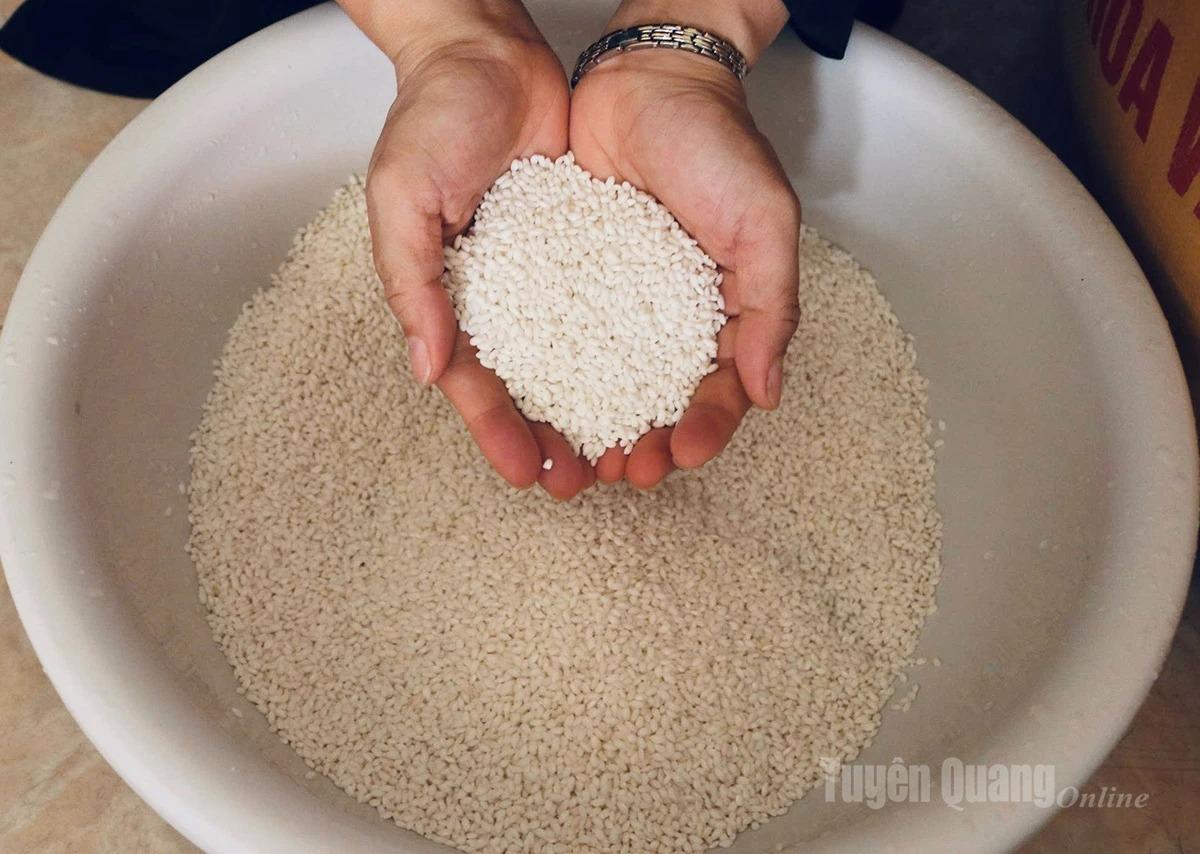 |
| Gio cake is made from Nep Cai Hoa Vang - a premium variety of glutinous rice with round, glossy grains to ensure a chewy texture and the signature taste of tradition. |
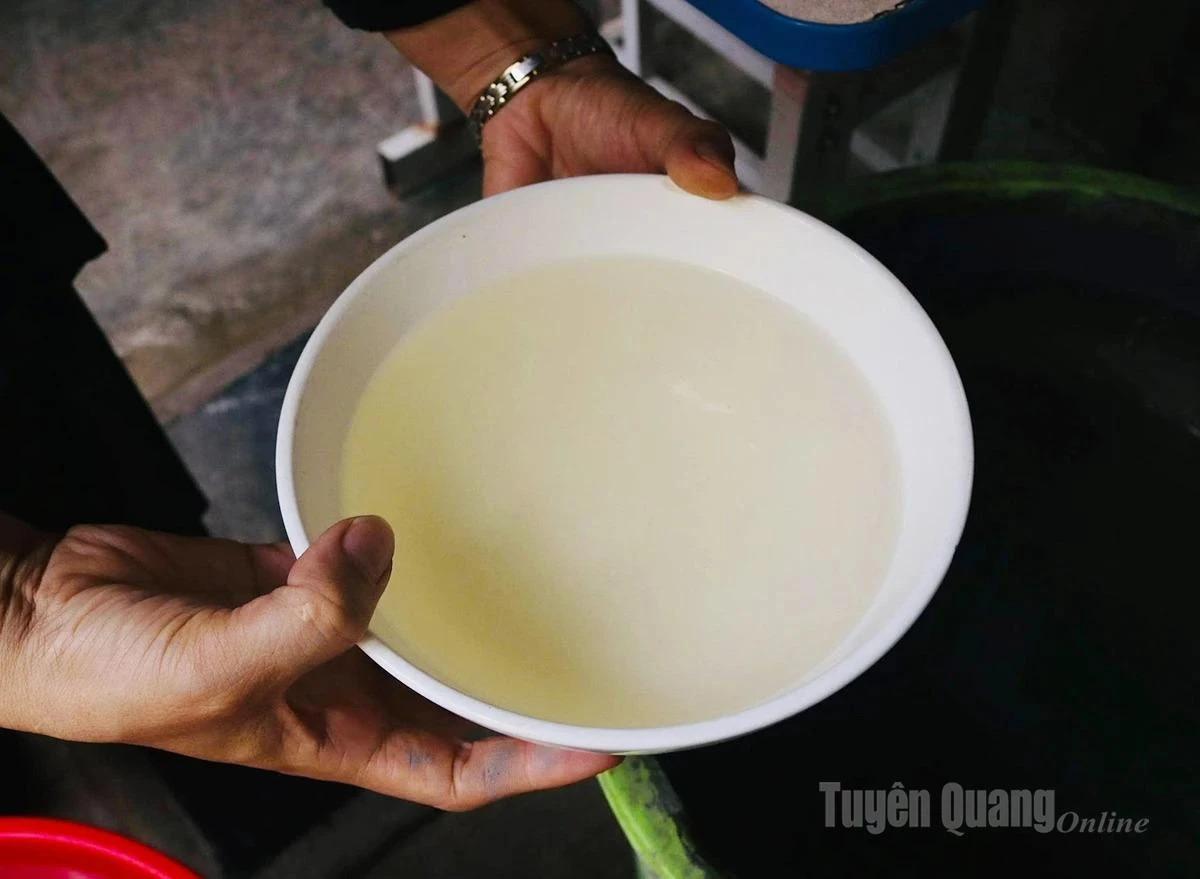 |
| Gio water is an essential ingredient in the making of Gio cake. It is extracted by filtering the ash of burnt plant husks such as grapefruit, chinaberry, and sesame, resulting in a clear liquid with a distinctive amber colour. |
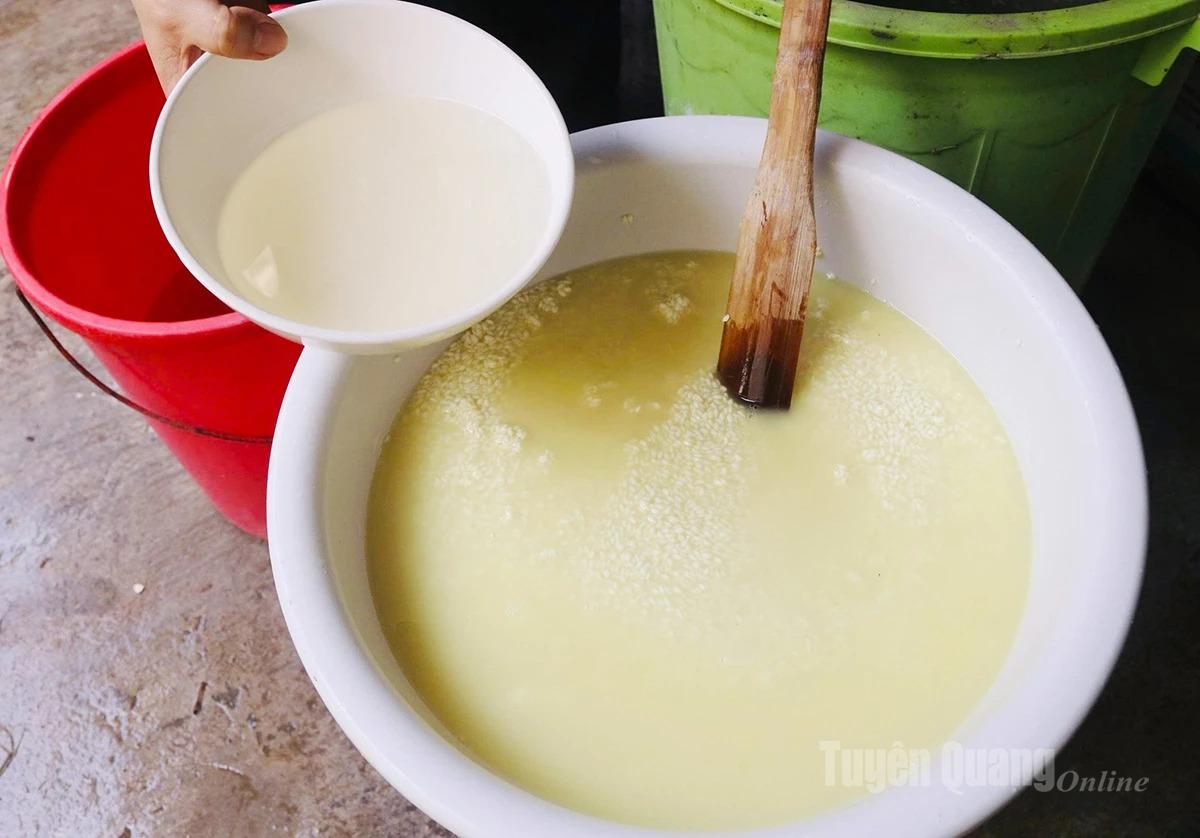 |
| After being filtered, gio water is used to soak the glutinous rice overnight. The rice is rinsed thoroughly with clean water, mixed with a little salt, and left to drain. |
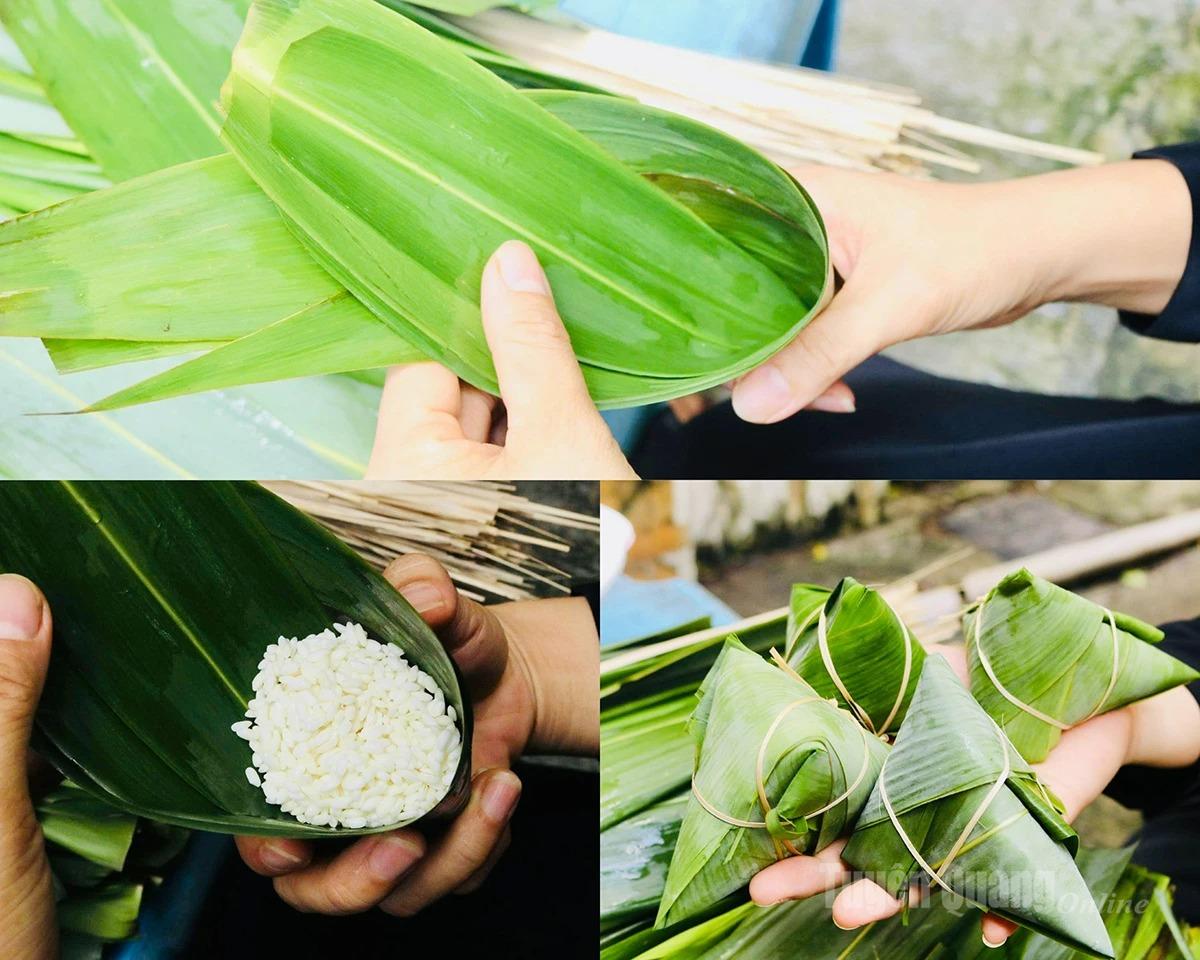 |
| To wrap the cake, one end of the leaf is first rolled into a funnel shape. Then, a small amount of glutinous rice is poured in. The remaining part of the leaf is carefully folded around the funnel to form a tight triangular shape. Finally, the cake is securely tied with banana fiber or bamboo strings in a cross pattern to keep it tight. |
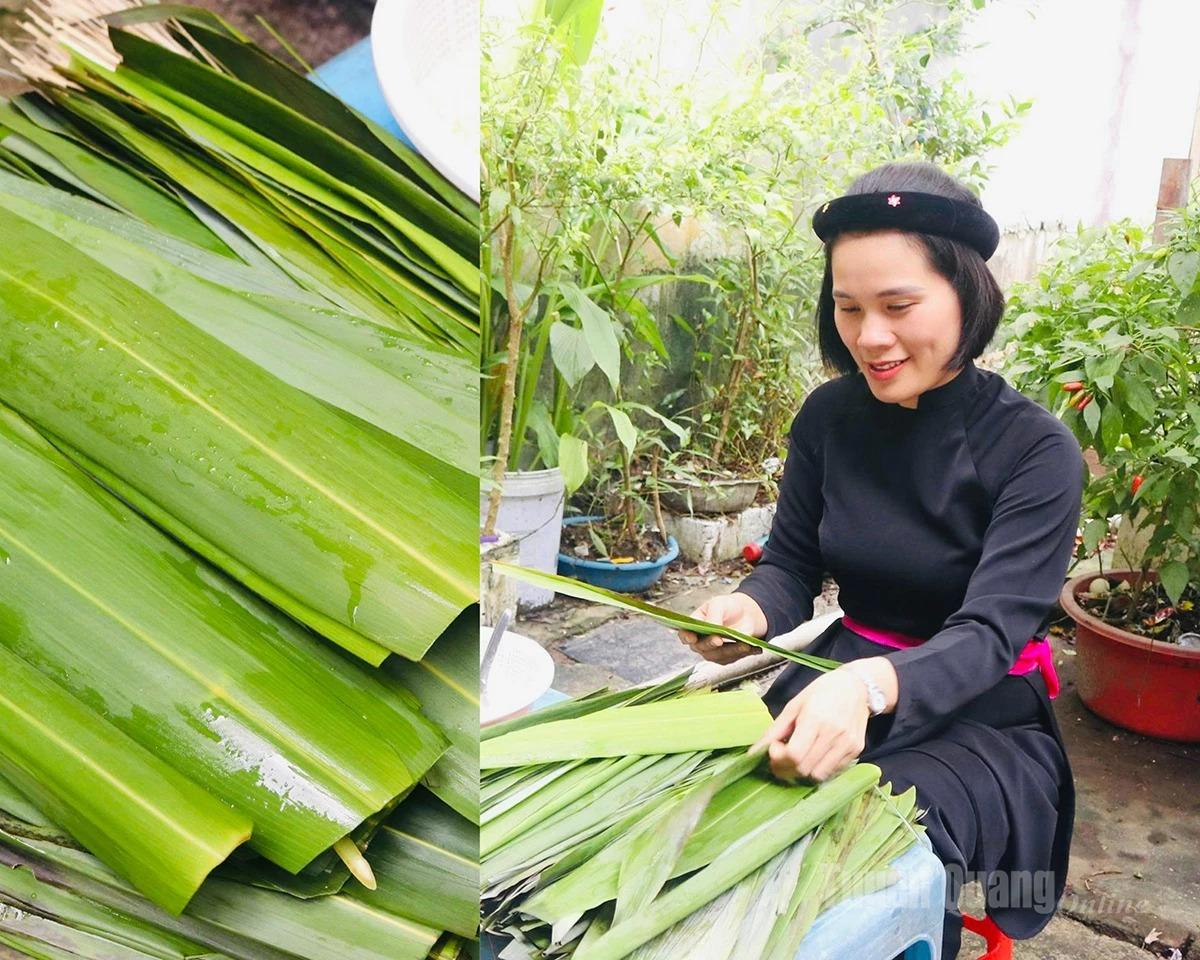 |
| The cake is wrapped in dark green tiger grass leaves. After being harvested, the leaves are trimmed at both ends and soaked in water to soften. |
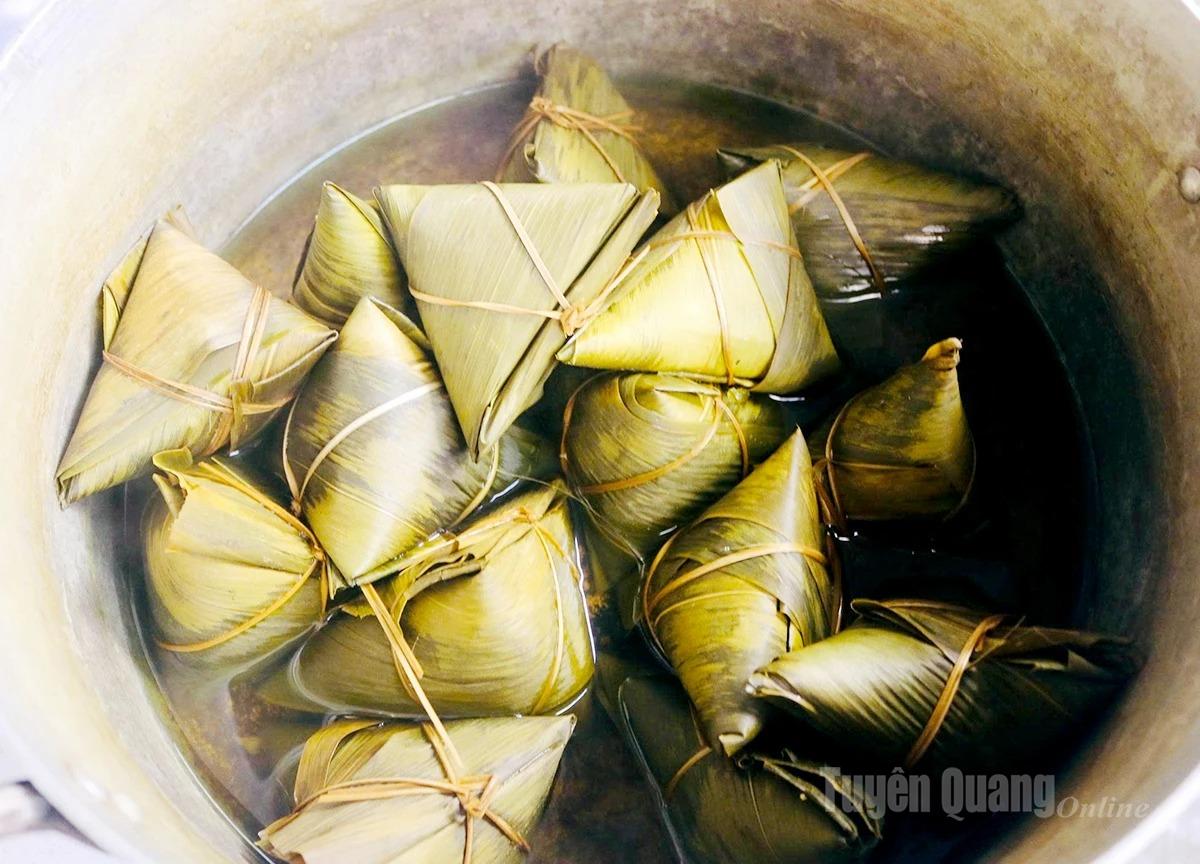 |
| The cakes are boiled in a pot filled with water for 3 to 5 hours, then removed and left to cool naturally. |
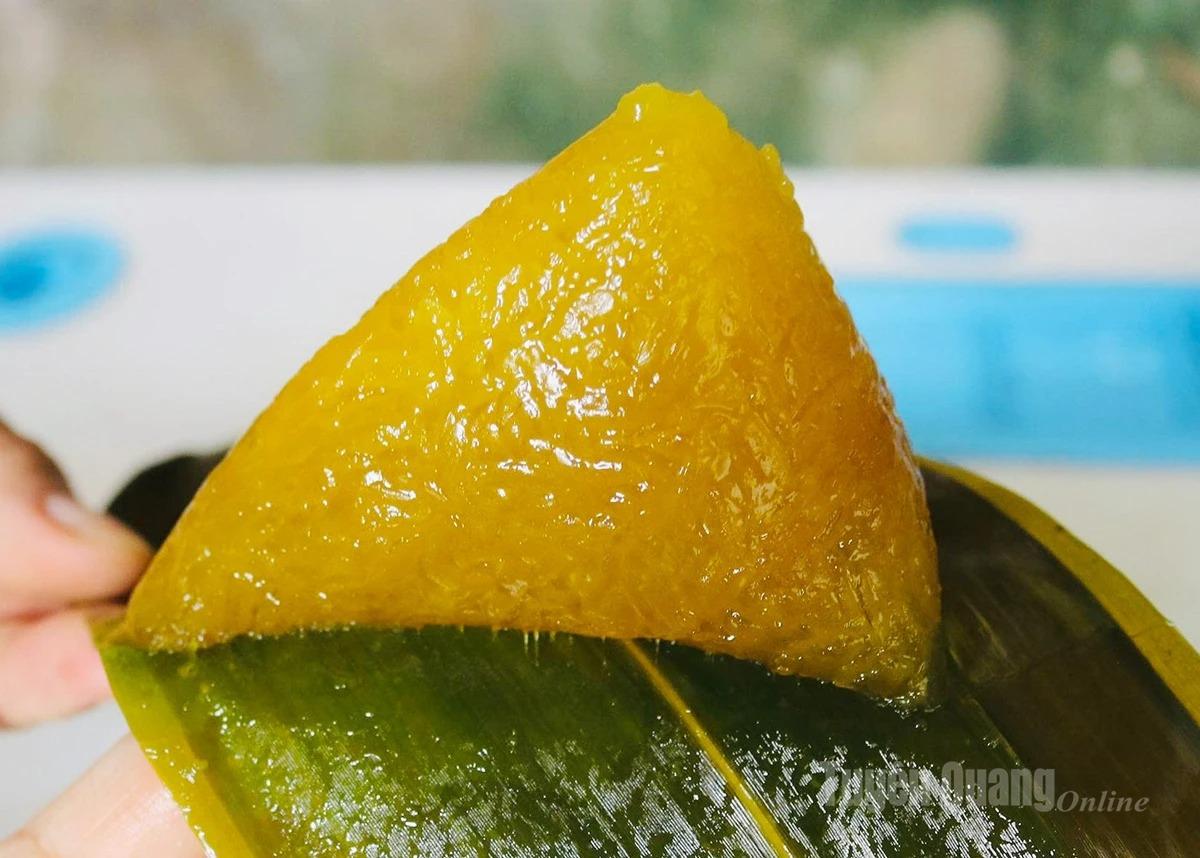 |
| Once cooked, the glutinous rice in Gio cake becomes soft and sticky. The surface is slightly translucent, glowing with the cake’s signature golden hue. |
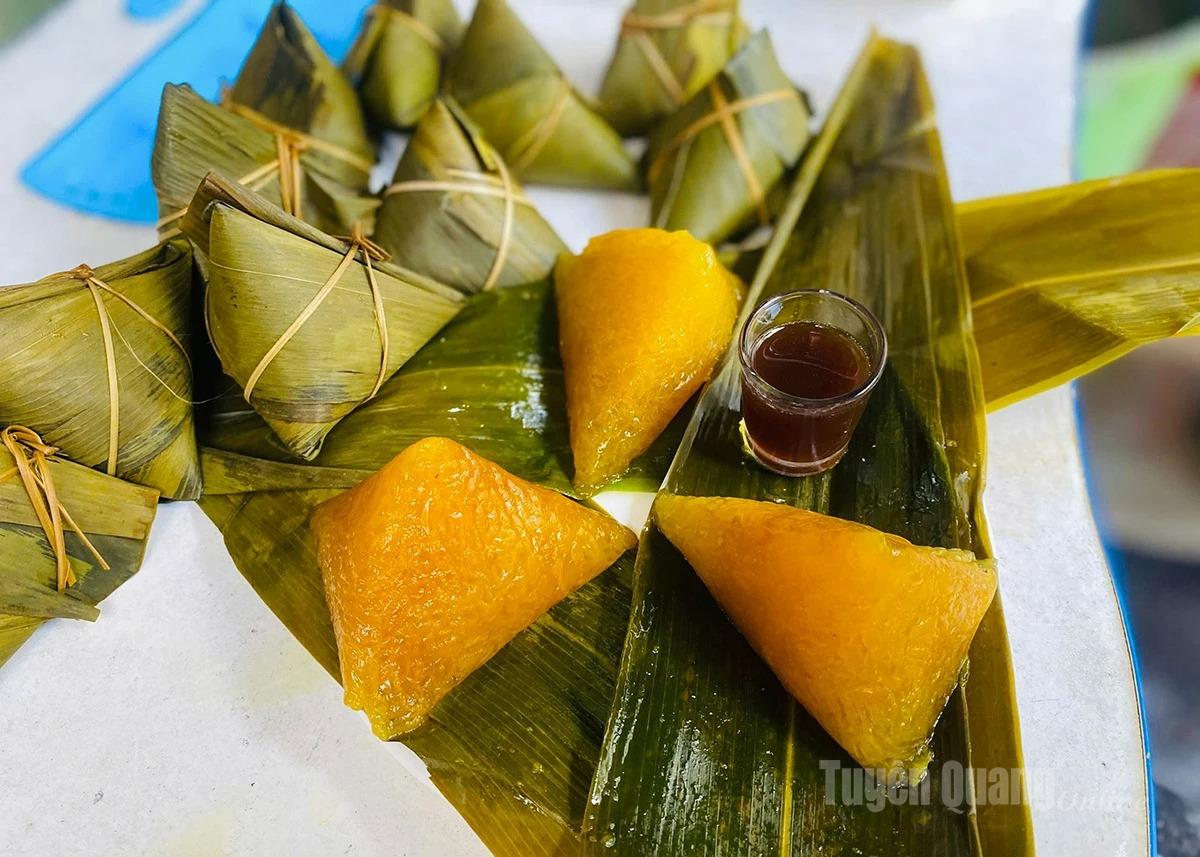 |
| The cake is served with sugar or cane molasses, creating a sweet, nostalgic flavor. |
Khanh Huyen













READER COMMENTS